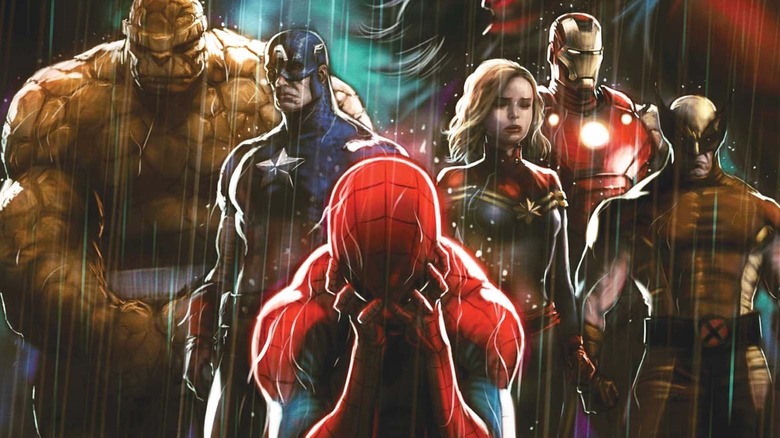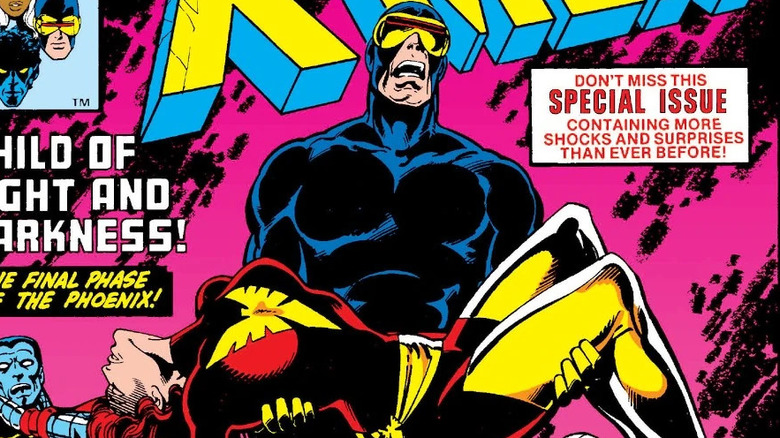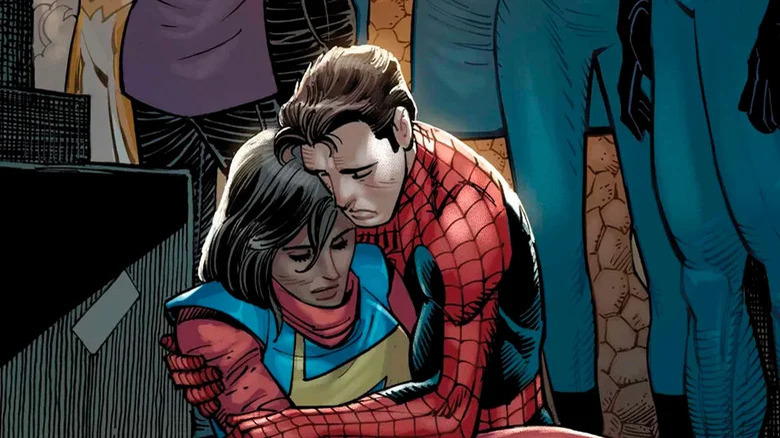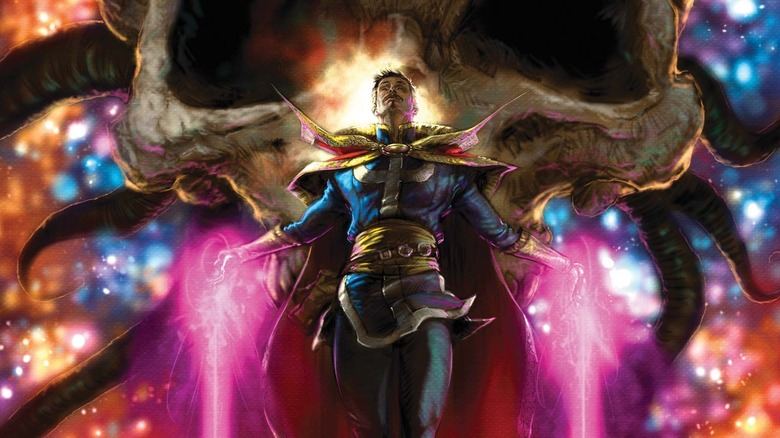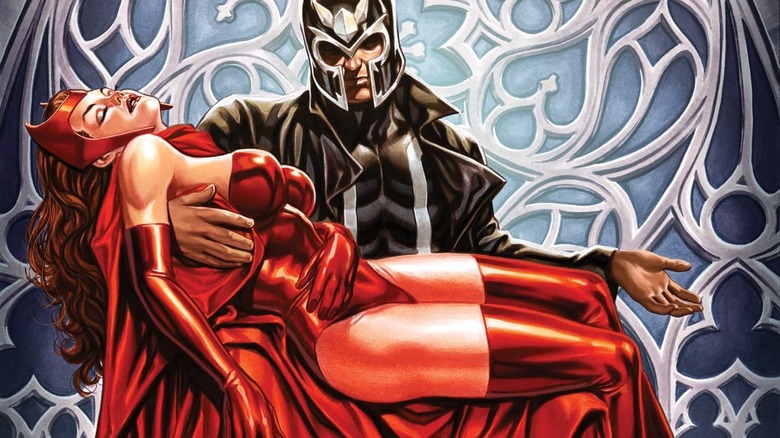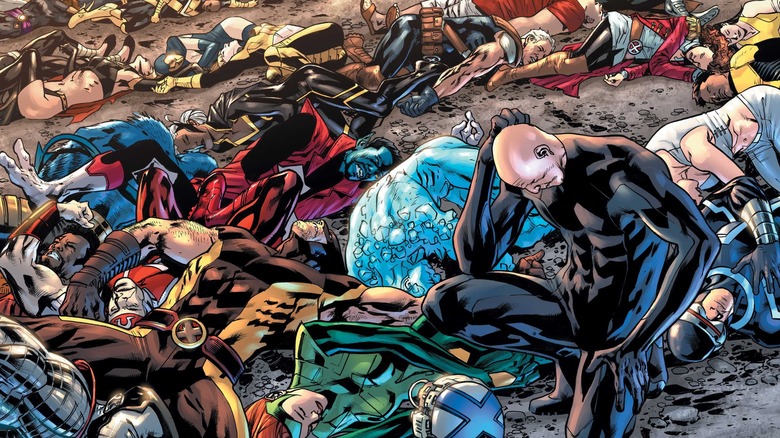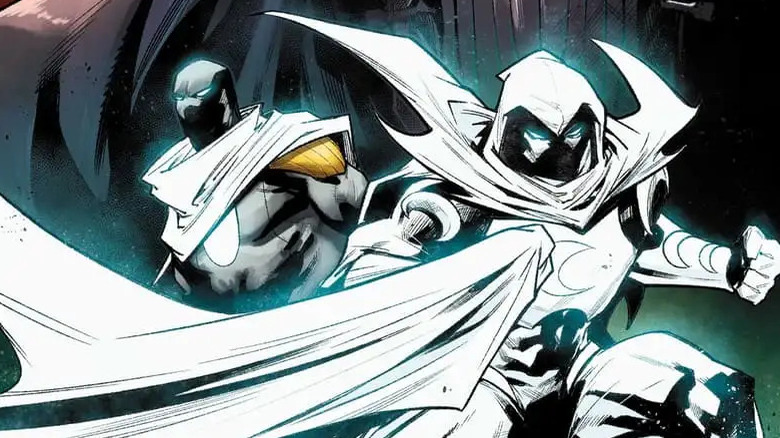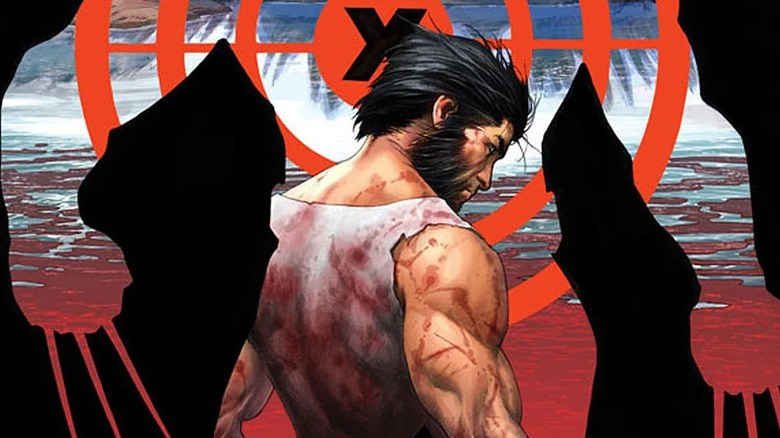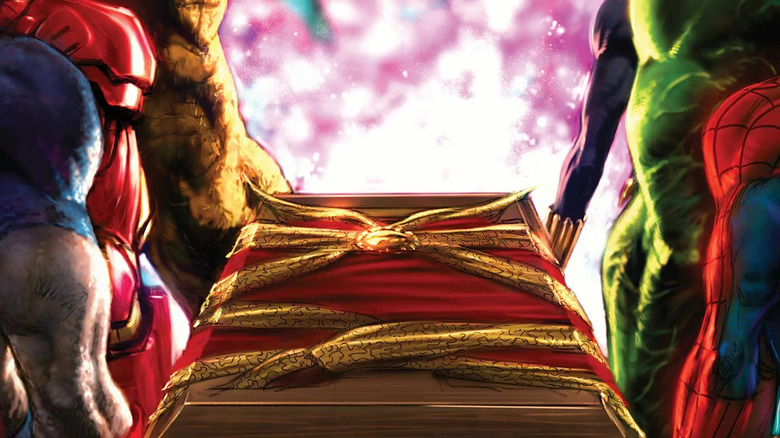Marvel Keeps Killing Its Best Heroes & Making Them Worse
Death has lost all its meaning in Marvel Comics — and in comics as a whole. Killing off characters has become a plot device, instead of having any real impact or long-term effect. And the problem is getting worse.
In the last few months alone, Marvel Comics has killed off some of its most notable heroes: Doctor Strange, Scarlet Witch, Ms. Marvel, and many of the X-Men have been taken off the board, with promises that their demise will change the Marvel Universe. However, instead of packing an emotional weight, death in these stories has become wholly sanitized. It has transformed into a boring trope used to reset the status quo. Readers know things will eventually revert to how they were before. It's beyond tedious.
In comics, killing off recognizable faces is treated like it's supposed to have a seismic effect, but the ripples are short-lived and quickly forgotten. Nearly every superhero or supervillain has died by now, or so it seems — many of them a few times. Marvel keeps trying to force readers to believe these meaningless deaths mean something, though, thereby making fans feel lied to.
The cyclical return to the status quo is killing the Marvel Universe, and to fix it, Marvel needs to have real stakes, real consequences, and make it so every death — even if not permanent — carries a long-term impact.
Marvel deaths used to mean something (until they didn't)
In the past, death did mean something at Marvel Comics.
Some of Marvel's most impactful stories featured popular characters tragically being killed. One of the most heartbreaking deaths came in "The Amazing Spider-Man" #121, where Gwen Stacy is killed in a fight between Spider-Man and the Green Goblin. While alternate versions of Stacy have become popular, the original has stayed dead. The Green Goblin perishes one issue later, and his legacy then haunts Spider-Man on a level that the living Norman Osborn never did (and the current resurrected one can't equal). Mar-Vell loses his battle with cancer in "The Death of Captain Marvel" in the 1970s, and only returns in exceptional circumstances. In "Uncanny X-Men," Jean Grey dies following the events of the "Dark Phoenix Saga," sacrificing herself after becoming a villain. At this point, death mattered, and it was taken seriously.
The resurrection of Jean Grey, though, was a turning point where death started losing meaning in the Marvel Universe. By now, Jean dying and coming back is just a trope, not something people care about. The matter only got worse in the 1990s when DC brought legions of new audiences to its book with "The Death of Superman," only to bring the big guy back less than a year afterward. By this point, the magic was lost. The more that readers saw a character come back and die, the more they stopped pretending death actually mattered.
By now, in modern comics, the end of any hero or villain is met with the implicit understanding that no character will ever permanently die, making the teases of death completely underwhelming. Yet, Marvel keeps promising death is a big deal, which only makes the publisher's latest wave of death storylines more exhausting.
Ms. Marvel's death shows off a big problem
When it comes to the problem of death in modern Marvel stories, "The Death of Ms. Marvel" is the best example of how meaningless and convoluted the trope has become. Ms. Marvel dies in the pages of "The Amazing Spider-Man," by Zeb Wells and John Romita Jr., when she is stabbed to death by Benjamin Rabin while shapeshifting to become Mary Jane Watson.
The death served a few significant purposes: First, to give the character a rebirth and resurrect her alongside the X-Men to align her powers with the Marvel Cinematic Universe version of the hero. Secondly, and most frustratingly, instead of her sacrifice being meaningful, it just pushed Spider-Man's story forward. A diverse, young, fan-favorite hero of color was killed off in a comic she had previously barely appeared in, only to serve a longstanding white hero's story. The optics were terrible on every level.
The argument that Ms. Marvel's death happened to make her mutant powers emerge also doesn't hold water. While the X-Men's resurrection protocols bring her back to life after discovering she has a mutant gene, the reveal could have happened without lazily killing Ms. Marvel. Instead, like in the "Ms. Marvel" television series, Kamala Khan could have learned about her connection to Marvel's mutants and worked with them to unlock her powers. Instead, readers got a jarring death storyline that wasn't necessary. They easily could have added to Ms. Marvel's history and abilities without putting her through the wringer and giving her an unnecessarily dramatic death.
Doctor Strange's death meant something, until it didn't
"The Death of Doctor Strange" proves that even the most well-written, beautifully drawn comics surrounding a character's death can carry little weight when the dust settles.
The event by Jed MacKay and Lee Garbett sees Doctor Strange murdered, then using his astral form to team up with Clea Strange to solve his own murder. After discovering Kaecillius is responsible for Stephen Strange's killing, the hero is briefly resurrected, but when Death claims his soul, it leaves Clea as the new Sorcerer Supreme.
"The Death of Doctor Strange" ultimately did what death-centered comics should do. It allowed someone else to take on the role of classic hero, in this case, the Sorcerer Supreme, and showed off a side of Clea readers had long waited to see. During her time as Sorcerer Supreme, she takes on undead villains, while continually showing off her true power — and a resolute, never-give-up attitude in regard to bringing Stephen back to life. Strange does come back as the Harvestman, as one of Death's servants, and following the defeat of undead villains and the Blasphemy Cartel, Doctor Strange returns to his mortal form, as the status quo reverts to its usual self once again.
And that's the problem. Even after considerable changes to Doctor Strange's life, none of this meant that much. While the comic is worth reading on its own merits, and crafts a good character arc for Stephen and Clea, the series didn't need to happen. He was killed to sell comics, and it's hard to see it any other way.
What did Scarlet Witch's death really change?
Scarlet Witch's death ended up being an attempt at redemption, and showed the hero trying to make amends for her dark Marvel history.
In "X-Men: Trial of Magneto" by Leah Williams and Lucas Werneck and the first "Hellfire Gala," Scarlet Witch is revealed to be killed. Magneto is named the main suspect due to his complicated relationship with his daughter. But what really happens is far more complex: Magneto had worked with Wanda Maximoff to redeem her for her actions during "M-Day," where she caused considerable death and depowered mutants across the globe. So, to make amends, she had agreed to sacrifice herself in order to heighten the abilities of the X-Men's resurrection protocol and bring back mutants who couldn't be resurrected previously.
The mission is a success, and the Scarlet Witch dies while creating the Waiting Room, further adding to the X-Men's resurrection capabilities. However, like most dead heroes, she is almost immediately brought back into the fold, and when she returns, she resumes her regular life.
By the end of the arc, Scarlet Witch's death serves as a redemptive arc for the powerful magic user. Her sacrifice allows her to help her fellow mutants, and it even redeems her deadly actions from years ago. But even with her death having meaning, it didn't last, and ultimately will be a small footnote in the character's history.
Marvel just took out the X-Men, too
One of the deadliest X-Men events in recent memory came from the most recen "Hellfire Gala," where the "Fall of X" leads to the deaths of hundreds of thousands of mutants. The fall of Krakoa, and the attack by Nimrod and Orchis, leaves Marvel's mutants in total disrepair, with their resurrection protocols being destroyed and few heroes left standing.
Yet, despite some iconic mutants being dead, including Jean Grey, Dazzler, and Iceman, and their method for bringing them back gone (for now), Marvel has already started bringing some of them back before the bodies could even be counted. Iceman was announced to star in his own series before the events of "Fall of X." Meanwhile, Louise Simonson's "Jean Grey" series, which sees the fallen hero revisit her past and set up her future, was also showcased. With characters popping up in future stories while the event is happening, it's hard for readers to get invested in deaths that will inevitably be reversed. So, seeing the X-Men all get killed off was quite a startling sight, but it has little emotional impact.
Who knows? Maybe some of the X-Men will stay dead for years. But that seems greatly unlikely considering the number of X-Men comics currently being released and the mutants being a major part of Marvel's publishing plans.
Moon Knight's death is coming
Just a few years after "The Death of Doctor Strange," writer Jed MacKay is killing off another popular hero in "The Death of Moon Knight" in "Moon Knight" #30 with Alessandro Cappuccio.
Death and resurrection are a vital part of Moon Knight's adventures, as the idea is tied directly into his origin and how Mark Spector became a hero to begin with. However, "The Death of Moon Knight" appears to be killing off the character to soft relaunch his ongoing series. With Spector's death, "Moon Knight" will be retitled "Vengeance of Moon Knight" by Marvel Comics, with the issue number reverting back to number one. Meanwhile, Moon Knight is getting a new costume, while a new figure will take up the mantle instead of Spector.
The comic will significantly impact Moon Knight. However, when all is said and done, things will likely eventually return to the usual status quo. Spector won't stay dead forever, particularly now that his MCU introduction has made him more popular than ever. "Moon Knight" has been one of the most consistently excellent ongoing books from Marvel Comics, yet even this comic can't escape a death arc.
How Marvel can fix its death problem
Marvel Comics can fix its death problem in a few ways.
Firstly, the overpromising of a character's death having a lasting impact needs to be toned down. Readers are aware that death in comics has mainly become meaningless at this point. It's happened over and over again with little long-term impact. So, teasing a character's upcoming death storyline as something that will shake the Marvel Universe is ... overselling it, to say the least, and readers don't like it.
Secondly, these "death of ..." storylines must stop happening solely for the sake of a soft reboot. Marvel loves to renumber ongoing series back to issue one to try to sell more comics, but it feels cheap and lazy. Killing off heroes shouldn't be a crutch to change a character and the status quo. Writers can find new ways to make significant or minor changes.
Thirdly, if they promise the death of a character, then it needs to have some long-lasting effect. For example, Wolverine's demise in "Death of Wolverine" lasted nearly three years before he was brought back. While Marvel promising the character's death could be permanent wasn't a believable idea given the hero's popularity, having him gone for years made readers miss the character and made his return feel much more impactful. If Marvel wants to take someone off the board, then make it count. No one ever dies for good in comics, but if the entire death, rebirth, and reintroduction of a character happens in the span of a year, it's easy to see why readers feel cheated.
The most obvious solution to fixing Marvel's death problem is avoiding storylines involving promised deaths. The idea doesn't carry the same weight it once did.
Marvel should learn from its overuse of death
Of course, Marvel isn't the only publisher who overuses death to change popular characters and storylines quickly. But they are the worst offenders in the current era of comics.
Within the last three years, Marvel has run titles featuring the deaths of Scarlet Witch, Doctor Strange, Ms. Marvel, The X-Men, and soon, Moon Knight. Consistently, comic book heroes — no matter how dire the circumstances surrounding their deaths have been — find a way back to life. It's time for that to change. Whether that's being more creative, making death feel more permanent, or stopping these death storylines altogether, the publisher needs to try something new. Otherwise, Marvel will continue to lose credibility by overpromising and underdelivering.
Readers are tired of the trope, and the publisher could quickly fix the problem by simply being more imaginative. Time will tell if Marvel learned the proper lesson from running so many death storylines in the span of a few short years. It's hard to believe that audiences are craving more.
